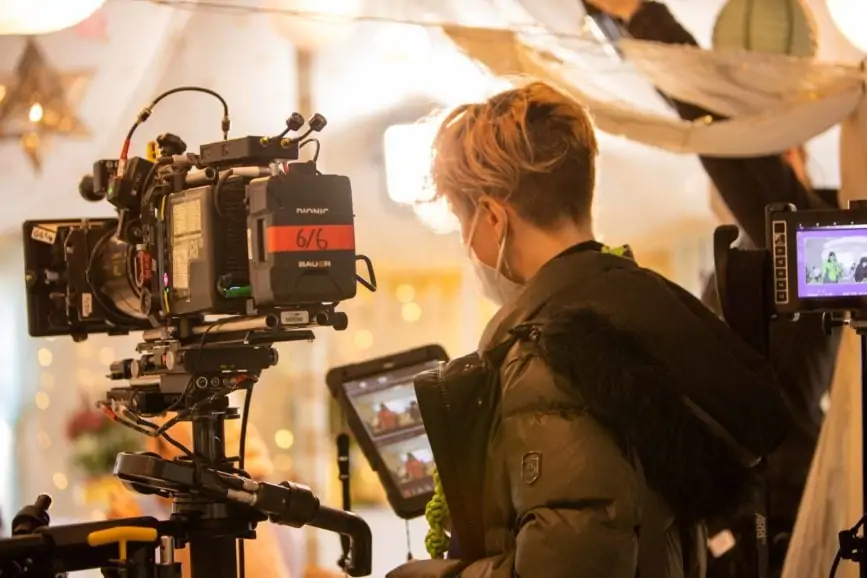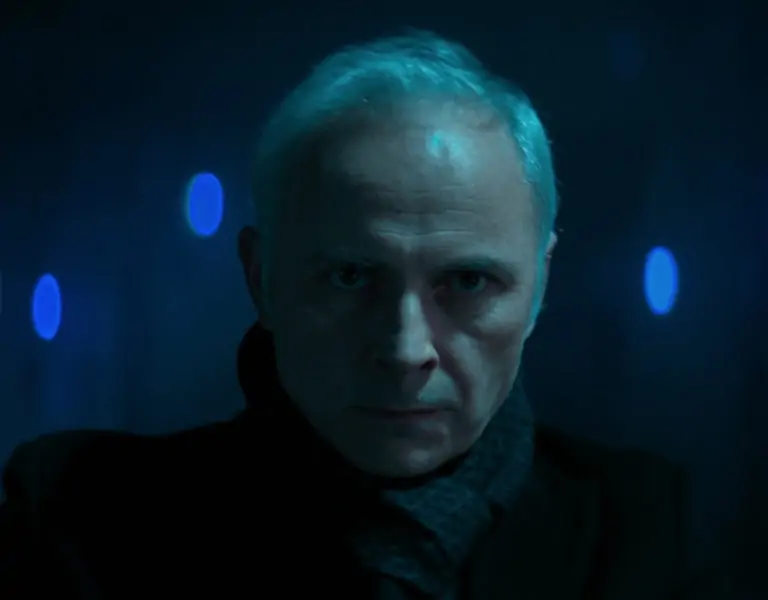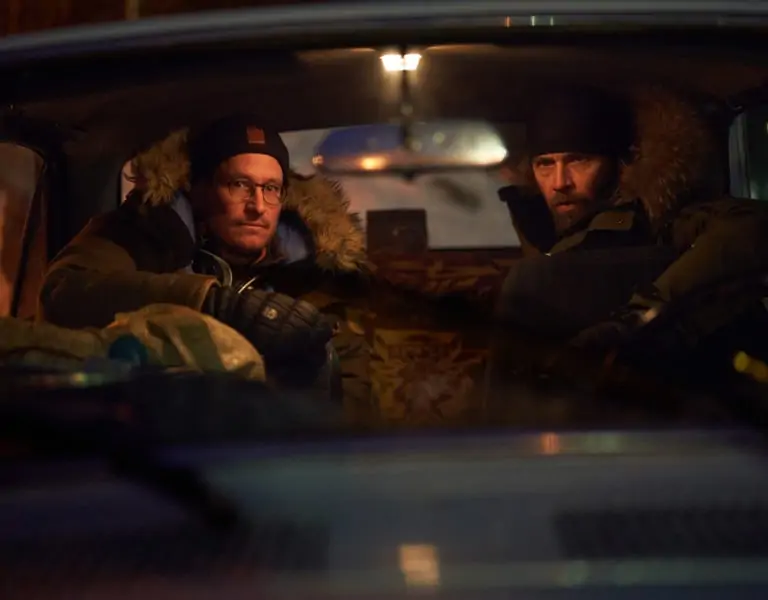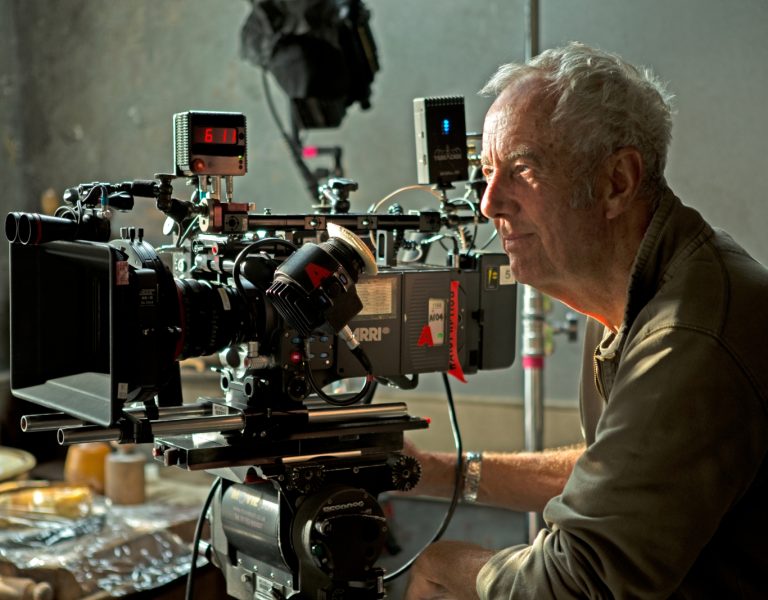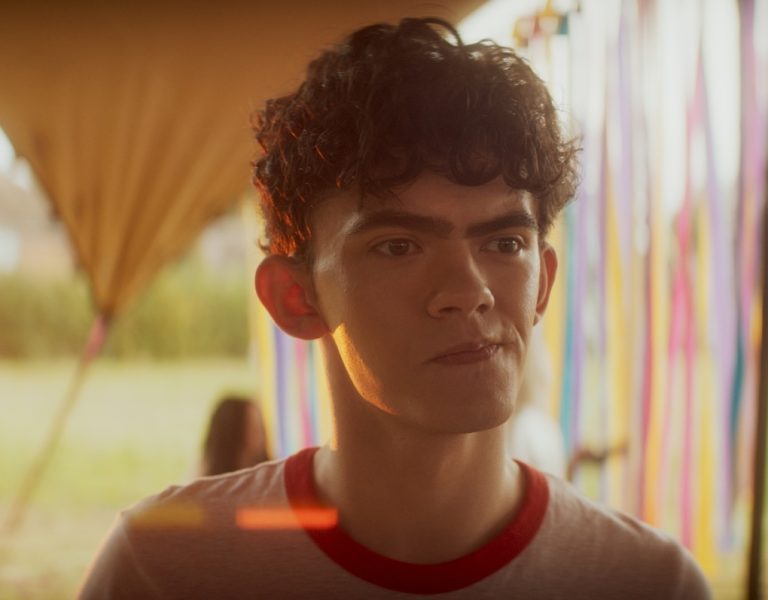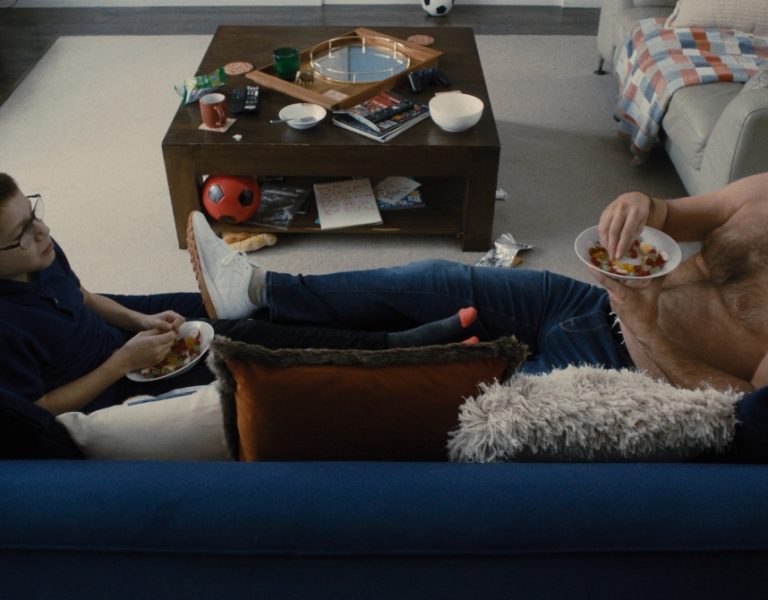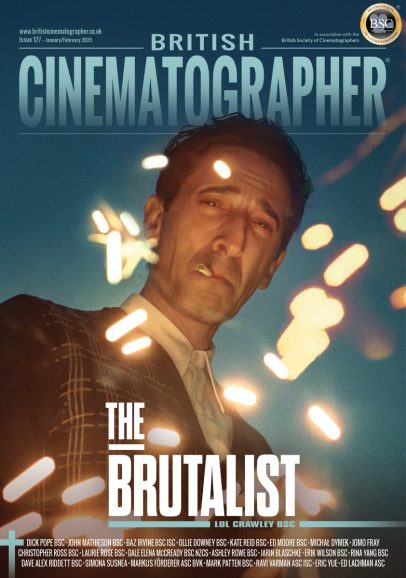PUNK POWER
Compelling narrative and equally bold cinematographic concepts combine in We Are Lady Parts – a character-focused sitcom with a female gaze that charts the highs and lows experienced by a Muslim punk band.
An all-female, Muslim punk band are the stars of the show in We Are Lady Parts, Channel 4’s six-part comedy series that follows the feisty characters as they find their voices, form a strong bond with their fellow musicians, and refuse to conform to stereotypes. Written, directed, and produced by Nida Manzoor (Doctor Who, Enterprice), her debut, highly original series explores representation, identity, and teenage angst, aided by daring and vivid cinematography.
Login to continue reading
This content is exclusively for digital magazine subscribers.
Start your subscription today, or login below to continue.
“The script was funny and emotional and brought me to tears,” says cinematographer Diana Olifirova. “As Nida originally envisaged the series as a film, she wanted to really push the cinematic side and be ambitious with the available budget. I knew Nida would want to make it visually powerful and complex – she uses cinematography to help tell the story and is a fan of developing shots.”
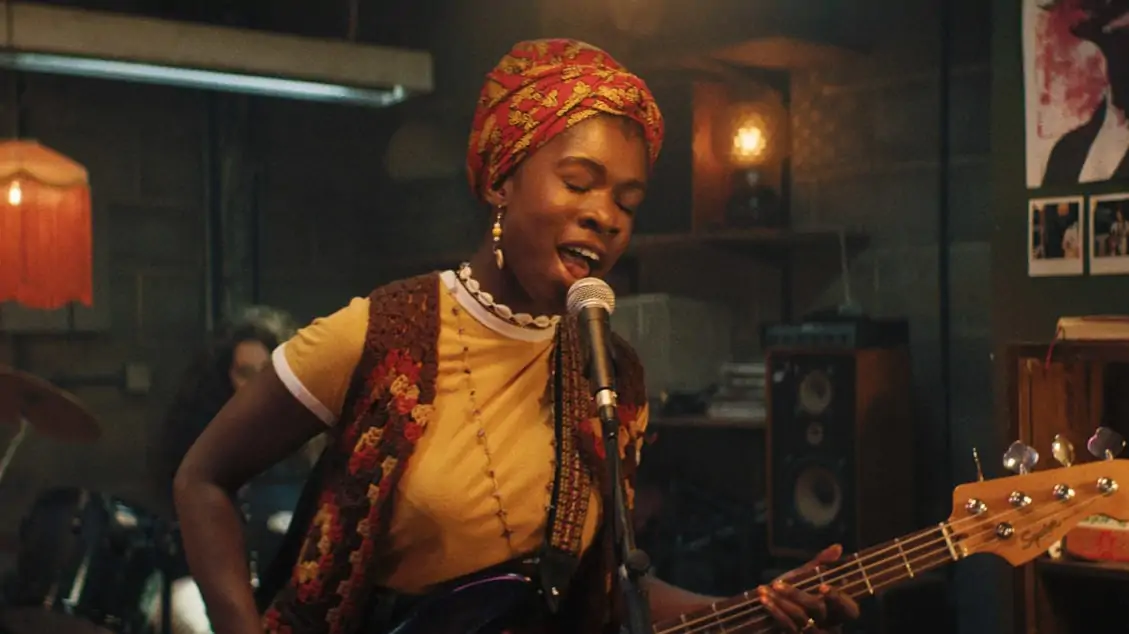
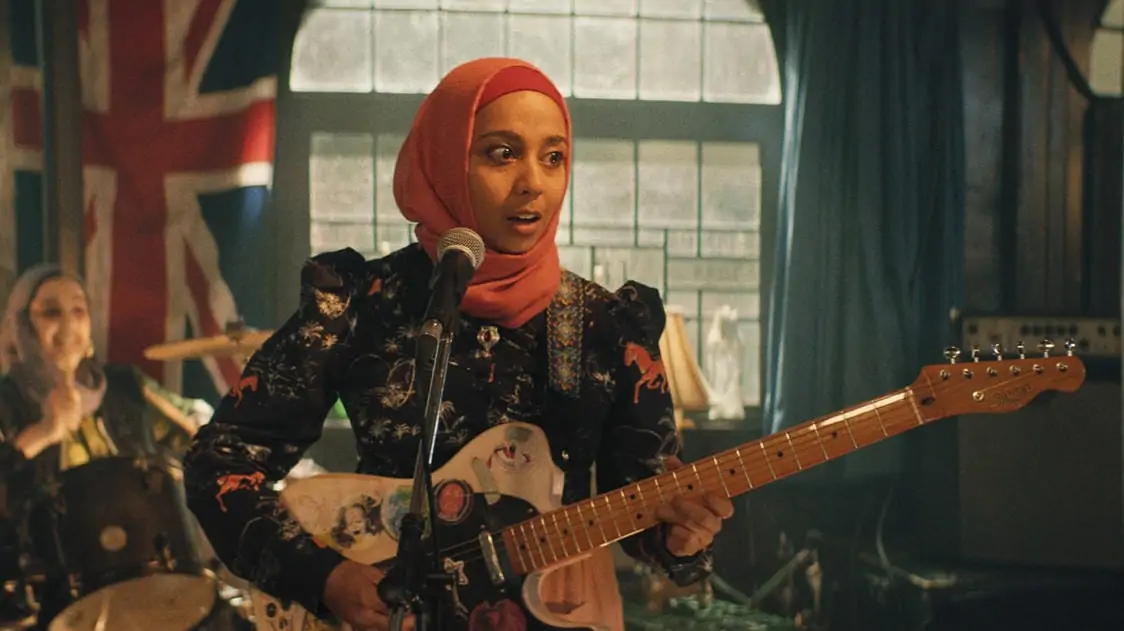
The cinematographer and director formed a production “dream team” with production designer Simon Walker and costume designer PC Williams. “We’re a diverse group that really comes alive when we’re together, feeling free to explore concepts. It felt like such an organic process, growing together as we moved the show forward.”
While Manzoor brought numerous striking visual references to the table, including films such as Submarine (2010), A Clockwork Orange (1971), Green Room (2015), American Honey (2016) and a variety of music videos, Olifirova often gained inspiration from the locations and script. “Essentially, the core idea comes from the director and then I try to elaborate and enhance the vision, embracing the spontaneity of whatever happens at the location and with the actors,” she says.
Although the series revolves around the band’s new lead guitarist Amina (Anjana Vasan), lead singer Saira (Sarah Kameela Impey) is also significant in the narrative. Manzoor wanted the series to be chiefly about the two characters and the conflicts they experience, separating the stories through the contrasting looks of their worlds.
“Amina’s world was softer, cuter, lighter, more pastel coloured and had a smoother flow using Steadicam. Saira’s world is darker, grungier, with a muted palette and more contrast. Its handheld, rougher look and harder light helps separate the worlds which later collide. Production design played a big part in this too. Their team are my main collaborators who influence the look a lot.”

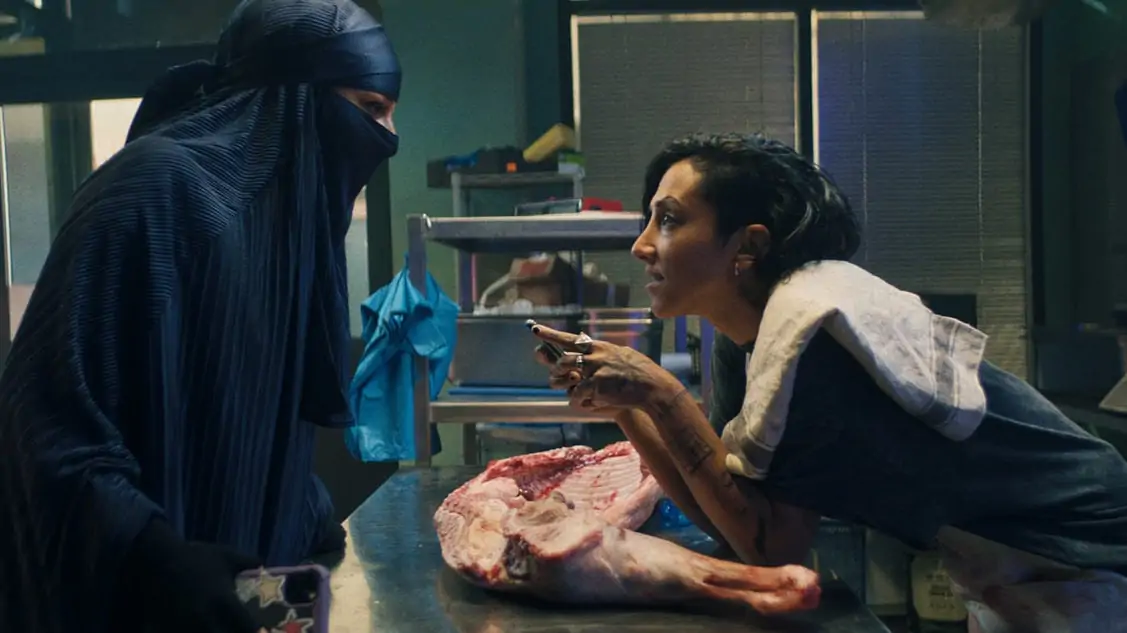
An emotional connection
In March 2020, when the first lockdown began, many of the east London locations that had been selected pre-pandemic were replicated through set builds in The Drumsheds studio in Enfield. Olifirova, who was new to studio shoots, enjoyed the flexibility they offered and how she could “really control the lighting and make the spaces look even better, expanding the look with the imagination of the art and lighting department.” Outside of the studio, scenes were filmed predominantly in east London in locations such as Ridley Road Market in Dalston, Cambridge Heath Station and around Shoreditch.
“COVID introduced certain limitations. For instance, we had to use a one-way system on set and wear goggles inside for the scenes when the band was singing,” says Olifirova. “When it’s your first big long-form project and there’s this extra pressure to contend with it could be challenging, but because we had such a strong team with positive attitudes, we adapted to the rules and focused on the vision.”
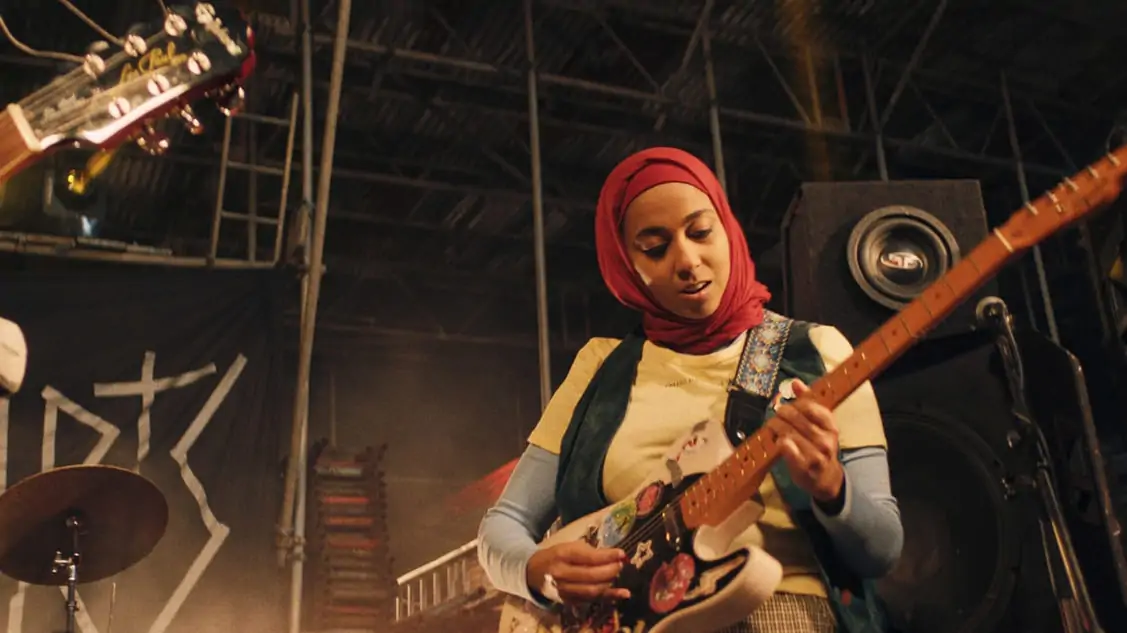
Working with QTAKE’s camera monitoring tool – led by Alex Dias at Mission Digital – helped the crew adhere to pandemic protocols. “It allows everyone to distribute their monitors to iPads, so you can all see the shot live,” she says. “You can also preview previous shots and compare the lighting which helped us work faster and have confidence in the coverage and that everything matched.”
Olifirova used the Artemis phone app to take stills of each scene and of the coverage needed which she shared in the crew’s WhatsApp group. “During the pandemic, some people were not allowed to be on set for rehearsal, but this meant everyone knew what to prepare next.”
From the outset, Olifirova set her sights on anamorphic lenses. “The background looks so much more picturesque, and I don’t mind if everything is not completely sharp in a wide shot. I think sometimes people over obsess about quality, but I don’t believe things always have to be perfect.”

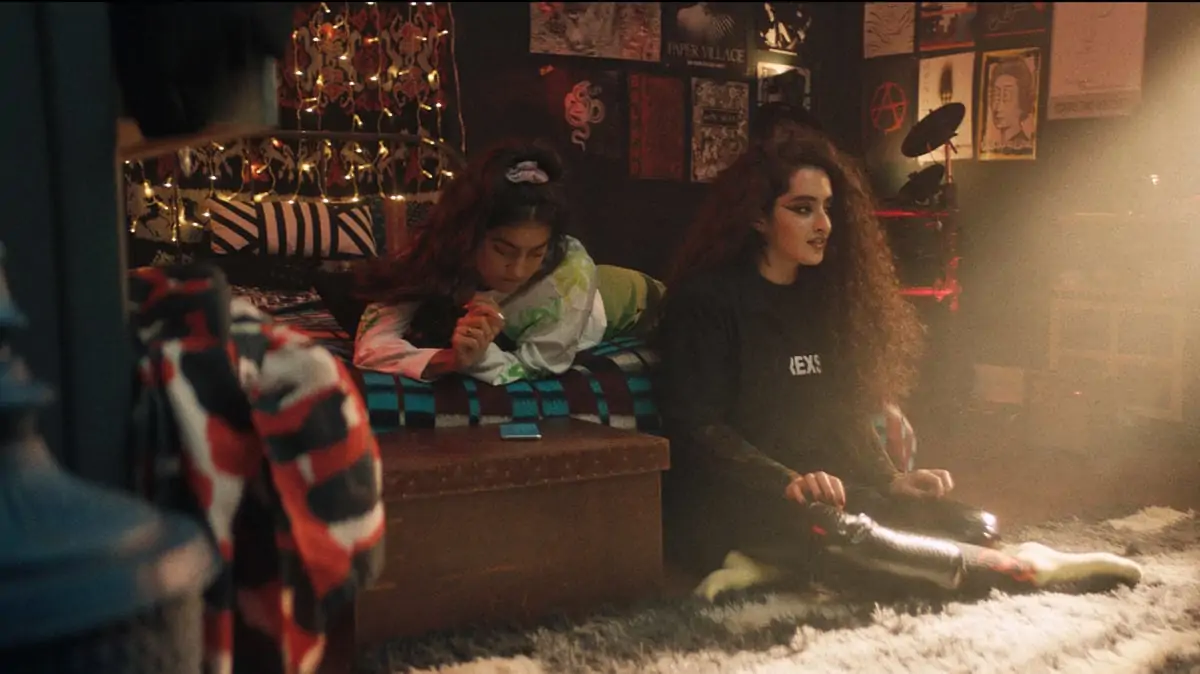
She chose Cooke Anamorphic lenses, shooting manly at f/2.8, and an ARRI Alexa Mini, with all kit provided by ARRI Rental. “It’s my usual camera of choice so I didn’t need to consider any other options and ARRI Rental are always so supportive to work with.”
Olifirova and Manzoor pushed for an aspect ratio of 2.35:1 due to its cinematic look and because it would allow them to include all band members more easily in wide shots. They were also keen to capture as much in camera as possible. “I even have my vignettes in camera and use SE ND filters a lot,” says the cinematographer. Steadicam operator -and Olifirova’s frequent collaborator – Josh Brooks and 1st AC Kate Molins were essential in translating the visual concepts into a reality, embracing the cinematographer’s choices and offering new ideas. “It’s important to have a really supportive crew who will help you plan as well as problem-solve independently,” she says.
As the core characters Amina and Saira mature and explore their identities, camera movement mirrored their emotions. When Amina feels uncomfortable in situations such as performing on stage, Olifirova switched to handheld. “I used my Easyrig to predict and feel Amina’s movement and really connect with her,” she says. “Whenever I shoot handheld I’m completely with the character – I almost feel like we’re the same person. After shooting an emotional scene at the end of episode five, when Saira tells everyone to leave the pub, I felt like crying because I felt so connected to the character. That’s how powerful it is. It’s beautiful to experience that first-hand – like being in the front row at the theatre.”
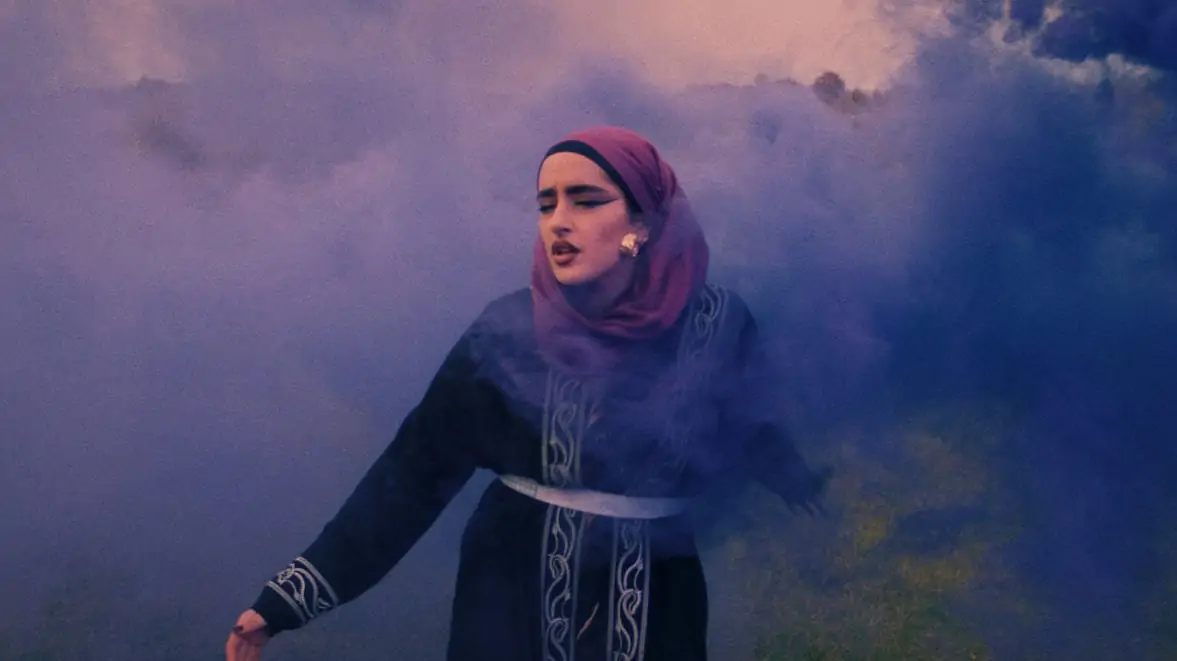

Olifirova used her Digital Bolex to film a scene which sees a nervous Amina vomit whilst performing at a concert. “I went handheld, sat on a dolly and pushed in to create a blurred effect and a feeling of being unstable, uneasy and dizzy, like the character.”
Long handheld and Steadicam developing shots were also pivotal in the storytelling. “I’ve shot a feature which included solid 10-minute takes and completed the ARRI Trinity Challenge where I lensed a 10 minutes story in one take (Exit To Stage (dir. Daphne Schmon, Emily Carlton), so I’m used to planning this way and being clever with the dynamic lighting,” she says.
One of the most complex shots to plan and execute was Amina in her wardrobe, the camera tracking back with her as she moves through the clothes and plays a song on the guitar. “We tried to work out how to create the illusion of an elongated wardrobe and ended up just building one. Amina was on a dolly track connected to my dolly, so we tracked forward together as I used a slider and a zoom for interesting contra-zooms.”

Embracing the imperfections
Believing every shot “should be like a painting”, Olifirova is keen to experiment with composition and lighting to achieve the desired effect, which gaffer Carolina Schmidtholstein was also happy to embrace. “I like to be playful with lighting. We might have a plan but then if something happens by accident and I like the effect I embrace it because those little imperfections can make a difference. Carolina is very easy to work with, picks up and develops all my explorations and ideas further,” says Olifirova.
Experimenting with colour and a variety of gels was at the heart of the series’ unique look, which incorporated green, yellow, orange and sometimes red and pink in the main palette. “I picked gels from the palette the director and production designer were working from and then added some extra ones because it’s important to let go and not try to make everything look uniform.”
Cheat’s founder and senior colourist Toby Tomkins not only finessed the final look in the grade, he also influenced the way in which Olifirova shot the series and will continue to do so when lensing future productions. “Everybody commented on how amazing the rushes looked and I think the LUT played a big part as the image looked richer and was close to our final grade.”
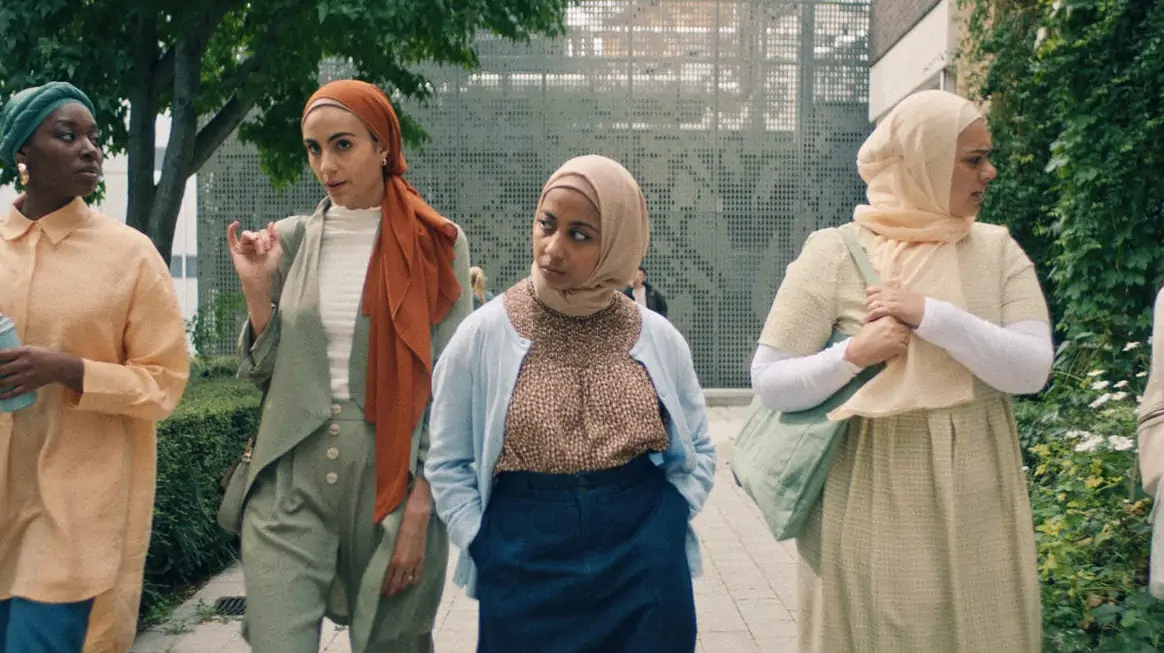
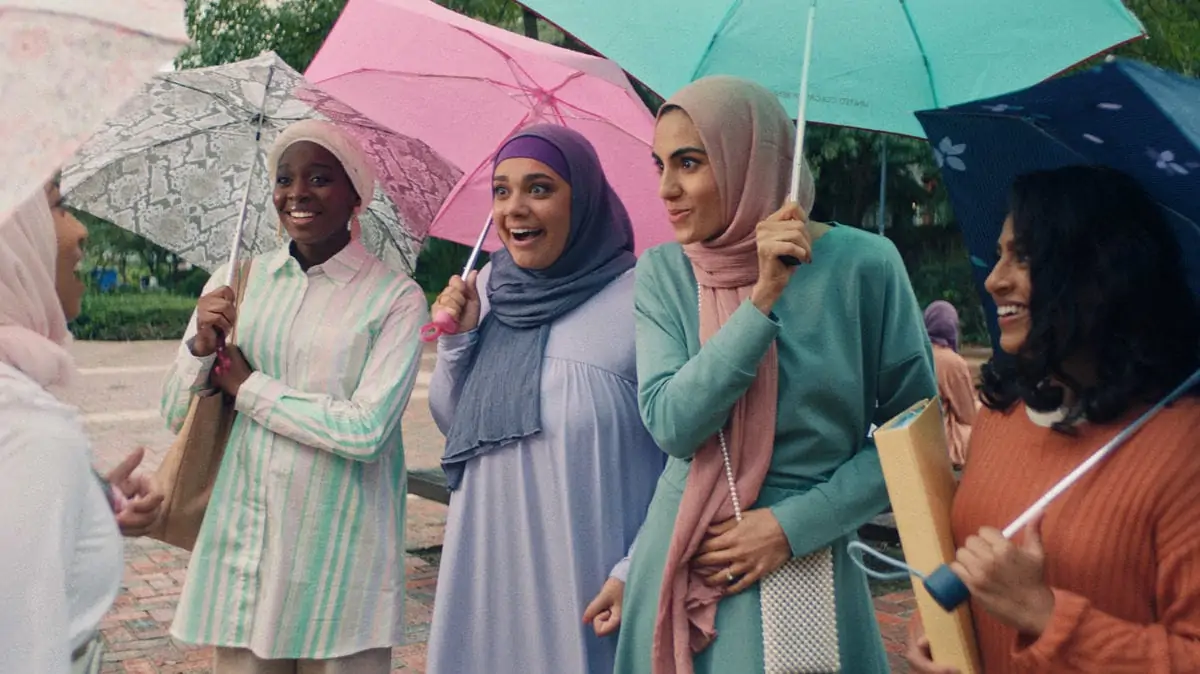
“It was really fun to work with Diana on creating a world for the show that was vivid and colourful, but also tasteful and cinematic. The LUT we developed borrowed elements from negative and print film but kept the colour separation more so we could really feel the variety of colours and celebrate the differences of each location and Diana’s decisions in lighting, which was key to the story and characters,” said Tomkins.
“After initial screen tests, we found we got the best results rating the camera at 400 ISO, which let us retain the full dynamic range of the scenes while giving us cleaner colour separation in the shadows so we could push the richness in the shadows for a more filmic look, something that we couldn’t do if underexposed. Thanks to the tremendous highlight latitude of the Alexa, even at 400 we didn’t encounter any clipped highlights in the entire show, and it really improved the signal to work with for the midtones where the skin sat and the shadows. We both prefer darker images, so we certainly compressed a lot of shadow detail a lot, but it kept the colour in the shadows to play with, which is a real luxury when trying to get that filmic richness.”
Colour was key in a scene in a butcher’s shop which saw Olifirova blend a selection of lighting fixtures and colours.” “For the top lights we used some daylight, some green, one had some magenta in it, and one was tungsten. That’s important to remember when replicating something in the studio because it’s easy to try to make it look how you think it should be, but then it’s not real.”
Gaffer Schmidtholstein’s core lighting line-up included remotely controlled Geminis, Lie Mats, Velvets, Asteras, Molebeams, 9-light Maxi Brutes, HMIs, and many ETC Source Fours, Par Cans and Dedolights to pick out details in sets.
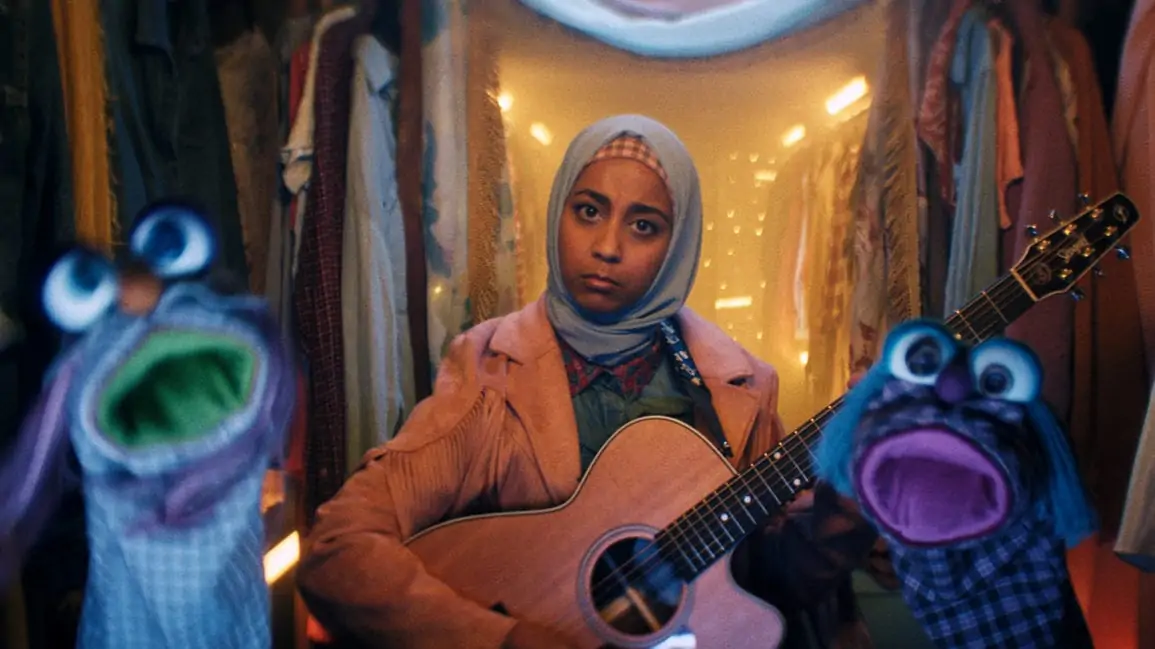
“We were the first to try the new Sonara from Panalux – an extremely powerful LED which we used to create a fantasy effect during a dream sequence. We used a lot of hard light and a little diffusion. I also fell in love with using Mole Beams to imitate the sun and the quality of light it produced. We added plenty of haze to emphasise the sunlight and used “Elvis” bounce for vibrancy and fun.”
Schmidtholstein elaborates: On the band rehearsal set, we asked production design for ceiling pieces with corrugated translucent panels which we could shine moving light through at various angles and in different colours, all programmed and controlled by desk operator Jonathan Massena de Camin live to camera and to the beat of the music.”
“When selecting practicals we had so much choice and production designer Simon Walker’s taste is impeccable. I embraced all the textures they produced,” Olifirova. “When the practicals cast a beautiful, coloured light on a character’s face and people say, ‘That’s such awesome cinematography’, I remind them that it was down to collaboration and play. That is the secret to production success, when all departments unite as one and have fun.”

